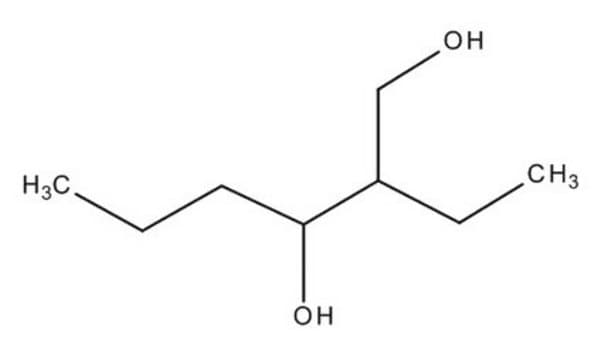1005706
USP
Acide acétique
United States Pharmacopeia (USP) Reference Standard
Synonyme(s) :
Acide acétique glacial
About This Item
Produits recommandés
Qualité
pharmaceutical primary standard
Densité de vapeur
2.07 (vs air)
Famille d'API
glacial acetic acid
Température d'inflammation spontanée
800 °F
Limite d'explosivité
16 %, 92 °F
4 %, 59 °F
Fabricant/nom de marque
USP
Technique(s)
gas chromatography (GC): suitable
Indice de réfraction
n20/D 1.371 (lit.)
Point d'ébullition
117-118 °C (lit.)
Pf
16.2 °C (lit.)
Densité
1.04 g/mL at 25 °C (lit.)
Application(s)
pharmaceutical (small molecule)
Format
neat
Chaîne SMILES
[F2C(F2C)13F3C]C(O)=O
InChI
1S/C2H4O2/c1-2(3)4/h1H3,(H,3,4)
Clé InChI
QTBSBXVTEAMEQO-UHFFFAOYSA-N
Vous recherchez des produits similaires ? Visite Guide de comparaison des produits
Description générale
Glacial acetic acid USP reference standard is provided as delivered and specified by the issuing Pharmacopoeia. All information provided in support of this product, including SDS and any product information leaflets have been developed and issued under the Authority of the issuing Pharmacopoeia. For further information and support please go to the website of the issuing Pharmacopoeia.
Application
Further information is available in the general chapter, 503- ACETIC ACID IN PEPTIDES, USP43-NF38 - 6741 of the USP (United States Pharmacopeia).
Autres remarques
Produit(s) apparenté(s)
Mention d'avertissement
Danger
Mentions de danger
Conseils de prudence
Classification des risques
Eye Dam. 1 - Flam. Liq. 3 - Skin Corr. 1A
Code de la classe de stockage
3 - Flammable liquids
Classe de danger pour l'eau (WGK)
WGK 1
Point d'éclair (°F)
102.2 °F - closed cup
Point d'éclair (°C)
39 °C - closed cup
Certificats d'analyse (COA)
Recherchez un Certificats d'analyse (COA) en saisissant le numéro de lot du produit. Les numéros de lot figurent sur l'étiquette du produit après les mots "Lot" ou "Batch".
Déjà en possession de ce produit ?
Retrouvez la documentation relative aux produits que vous avez récemment achetés dans la Bibliothèque de documents.
Les clients ont également consulté
Notre équipe de scientifiques dispose d'une expérience dans tous les secteurs de la recherche, notamment en sciences de la vie, science des matériaux, synthèse chimique, chromatographie, analyse et dans de nombreux autres domaines..
Contacter notre Service technique









